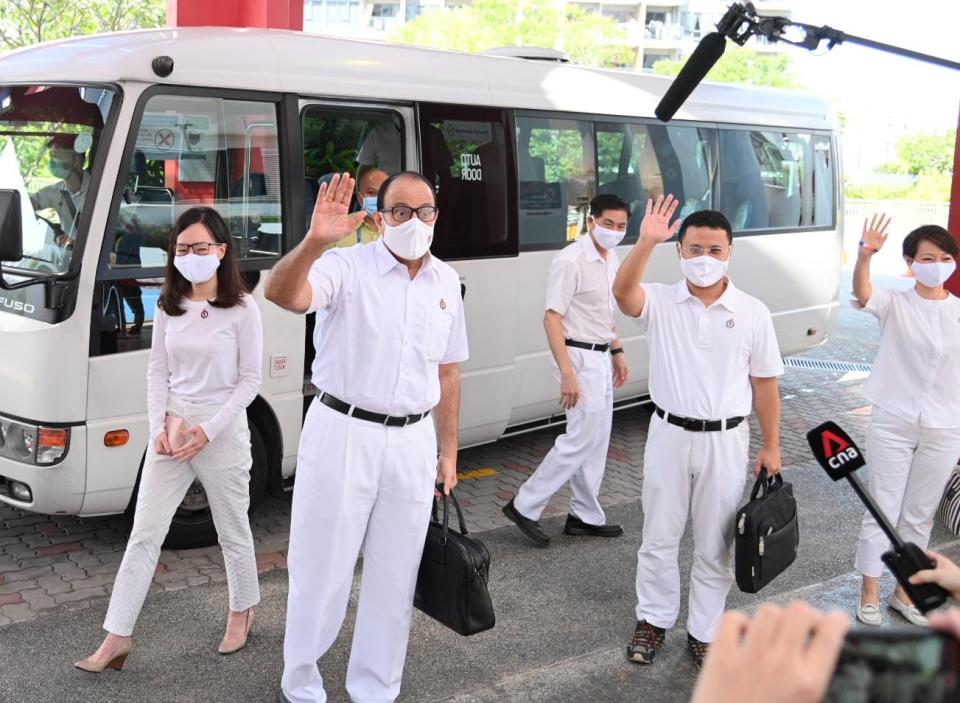COMMENT: PAP’s GE2020 tactics show ingenuity of GRC system

by Bertha Henson
If the People’s Action Party (PAP) cannot equal or surpass that 70 per cent vote share it was given in GE2015, it will only have itself to blame.
It made some masterful tactical moves on Tuesday’s Nomination Day (30 June) to shore up constituencies which it perceived will have strong opposition contenders. Ministers were moved like chess pieces on the board – adding Desmond Lee to its West Coast GRC slate which already has one minister in S Iswaran, and Heng Swee Keat making a last minute appearance at East Coast GRC.
East Coast voters would have to think hard about whether they want to keep or discard the prime minister-in-waiting. West Coast voters would have to decide between giving an old warhorse, Dr Tan Cheng Bock and his Progress Singapore Party (PSP), a chance or keep two full ministers.
With the two “coasts’’ fortified, the PAP moved Ng Chee Meng to anchor the new GRC of Sengkang.
Josephine Teo was moved out of her Marymount portion of Bishan-Toa Payoh GRC to helm Jalan Besar. It looked like a move to safety for her, as Marymount is now a single-seat ward and comparatively, she isn’t the most popular of ministers. On the other hand, office holder Grace Fu stayed put in Yuhua single-seat ward, as she did in the last election.
The Workers’ Party (WP) is in retreat, spreading its key people around to consolidate its defence of Hougang and Aljunied GRC. There is no master stroke this time as in GE2011, when Low Thia Khiang struck out of Hougang to helm Aljunied GRC. I think Low should have contested this round, to help his successor Pritam Singh solidify his base.
Over the past decade, the WP has been quite wise about showcasing its stars. Four candidates have had exposure in Parliament as Non-Constituency MPs (NCMPs) in two terms. Gerald Giam, Yee Jenn Jong, Leon Perera and Dennis Tan, besides fighting in past elections, have cut their teeth in Parliament. But the other WP candidates, even those who had contested in the last election, have had a very low profile. Like new PAP candidates, newcomers would have a hard time gaining face and name recognition with voters. But, unlike the PAP’s new faces, they cannot graft themselves onto strong, prominent personalities in GRCs.
If Pritam Singh had struck out of Aljunied GRC, which had a much reduced vote share in GE2015, to helm another GRC team, he might well suffer the fate of Chiam See Tong, who moved out of Potong Pasir to contest Bishan-Toa Payoh in GE2011 – only to find his party turfed out into the cold with no seat at all.
That is the ingenuity of the GRC system. Voter considerations about individuals on the slate counts for as much as the strength of the slate as a whole. It comes down to not just voting along party lines, but also whether some individuals are worth sacrificing. It’s a tough call but not unprecedented. Aljunied voters showed the way when it decided to sacrifice three office-holders to bring in Low and the WP in GE2011.
Looking at the WP candidates spread out among four GRCs, I can’t tell which is the B team. But looking at the contestants on the PAP side, I would say that Sengkang GRC would be the key battleground for the two sides. It would be interesting to watch how Ng Chee Meng, a lieutenant general and former Chief of Defence Force, squares up to the WP slate which includes academic Jamus Lim, touted as the party’s newest star.
The PAP’s superior tactical strategy comes at a time when voters are more concerned about keeping their jobs than other issues. Even cost-of-living issues and price of HDB flats pale in comparison to the overarching need for employment. The PAP’s manifesto reflects this.
The PAP is also making much of the NCMP argument that guarantees that the opposition will always have a voice in Parliament – or at least 12 voices. So, there will be an elected PAP MP to look after the constituents’ needs, and the failing opposition candidate to articulate opposition views.
This argument, however, assumes that opposition voters would be happy enough to have their views ventilated, even if no action results from this. Giving all 12 NCMPs voting rights, even for constitutional amendments, will not make a difference in Parliament, except as a recording in Hansard.
That’s because the PAP will still have a super-majority. Do the maths: If all 93 seats go to the PAP, there will be 12 NCMPs, making a total of 105 parliamentary votes. A two-thirds majority required to amend the Constitution is 70, well within the PAP’s super-majority.
I think the PAP is shooting itself in the foot. The opposition can turn the NCMP argument on its head: Vote opposition into Parliament, break the PAP’s super-majority, and you will still have the PAP looking after your needs at the constituency level. That’s because failed PAP candidates will become grassroots advisers and make every attempt to win back the vote in the next round.
For that to happen, some GRCs would have to go the opposition – and we’re back to square one having to weigh the slate and candidates.
Voters will have a lot to think about over the next nine days.
Bertha Henson is a veteran Singapore journalist who now lectures at NUS. The views expressed are her own.
Follow Yahoo News Singapore’s GE2020 coverage here.
Stay in the know on-the-go: Join Yahoo Singapore's Telegram channel at http://t.me/YahooSingapore
Related stories:
GE2020: All seats contested for second straight GE, Heng Swee Keat springs surprise
GE2020: Singaporeans shouldn’t think NCMPs can replace elected opposition MPs - WP Dennis Tan
GE2020: Who are the candidates contesting in your constituency (GRC)?
GE2020: Who are the candidates contesting in your constituency (SMC)?

